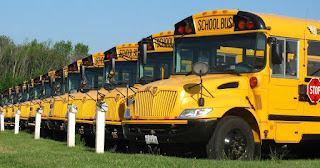"The history of social movements makes clear that people want political education in moments of crisis and repression, and that they want to mobilize when they see reasons for hope." (Photo: John Picken Photography/Flickr/cc)
As students and educators gear up for back-to-school this month, more and more of us are asking how we should make sense of public education in this political moment. The history of social movements makes clear that people want political education in moments of crisis and repression, and that they want to mobilize when they see reasons for hope. The Highlander Folk School, for instance, offered such education and hope for the building of the Civil Rights Movement, which then seeded hundreds of citizenship schools and freedom schools across the South.
Freedom schools today would likely be pushing us to ask, “What is happening with our public education system, and what should be our intervention?” One sign to give us hope is that as elites cut, the masses build.
The Washington Post recently revealed a detailed timeline of policy changes and other efforts over the past year and a half by the Education Department to curtail and roll back civil rights protections for students, including policies to refrain from examining possible systemic causes of discrimination. Federal actions have also included renewed attacks on affirmative action, using rhetoric from a quarter-century ago that positioned Asian Americans as “racial mascots.” But in the face of such regression, victories in the courts are accumulating, many led or supported by members of the new national Education Civil Rights Alliance. Several recent examples:
And, as Congress remains immobilized and ineffective in addressing gun-fueled violence and killing, who can forget the mass mobilizing and policy-directed actions by and of students following the Parkland shooting? Young people stand at the heart of social movements, from the student groups in the Civil Rights Movement, to today’s Movement for Black Lives—centered heavily on young people, catapulted by three young Black women, two of whom are also queer, that provided the momentum for the post-Parkland mobilizing.
None of these happened without struggles over inclusion and the intersection of multiple forms of injustice, but they thrived precisely when they dived into those contradictions. Education can strengthen our democracy when it raises our consciousness, reframes the debate, and mobilizes the public to retool the core levers of change to advance equity and justice. As we head back to school, such should be central to our lessons.
Freedom schools today would likely be pushing us to ask, “What is happening with our public education system, and what should be our intervention?” One sign to give us hope is that as elites cut, the masses build.
The Washington Post recently revealed a detailed timeline of policy changes and other efforts over the past year and a half by the Education Department to curtail and roll back civil rights protections for students, including policies to refrain from examining possible systemic causes of discrimination. Federal actions have also included renewed attacks on affirmative action, using rhetoric from a quarter-century ago that positioned Asian Americans as “racial mascots.” But in the face of such regression, victories in the courts are accumulating, many led or supported by members of the new national Education Civil Rights Alliance. Several recent examples:
- The Trump Administration has been pushing to siphon funds from various programs, which would dis-invest in already struggling communities in order to invest billions into expanding school choice and vouchers. But inadequate funding for historically marginalized communities is what lies at the heart of the New Mexico ruling that the state fails to provide sufficient public education, the California ruling that the case against the state for violating students’ constitutional right to literacy can move forward, and the Michigan ongoing case to ban public funds for private schools.
- The Education Department has rescinded guidance that protects transgender students. But federal courts have repeatedly upheld school or district policies protecting transgender students in Florida, Oregon, and Pennsylvania.
- Newly filed cases seek to protect other groups as well, including children of immigrants in New Jersey, students with mental health disabilities in North Carolina, and students defrauded by for-profit online colleges and loan-servicing agencies nationwide.
And, as Congress remains immobilized and ineffective in addressing gun-fueled violence and killing, who can forget the mass mobilizing and policy-directed actions by and of students following the Parkland shooting? Young people stand at the heart of social movements, from the student groups in the Civil Rights Movement, to today’s Movement for Black Lives—centered heavily on young people, catapulted by three young Black women, two of whom are also queer, that provided the momentum for the post-Parkland mobilizing.
None of these happened without struggles over inclusion and the intersection of multiple forms of injustice, but they thrived precisely when they dived into those contradictions. Education can strengthen our democracy when it raises our consciousness, reframes the debate, and mobilizes the public to retool the core levers of change to advance equity and justice. As we head back to school, such should be central to our lessons.
This work is licensed under a Creative Commons Attribution-Share Alike 3.0 License
---




No comments:
Post a Comment